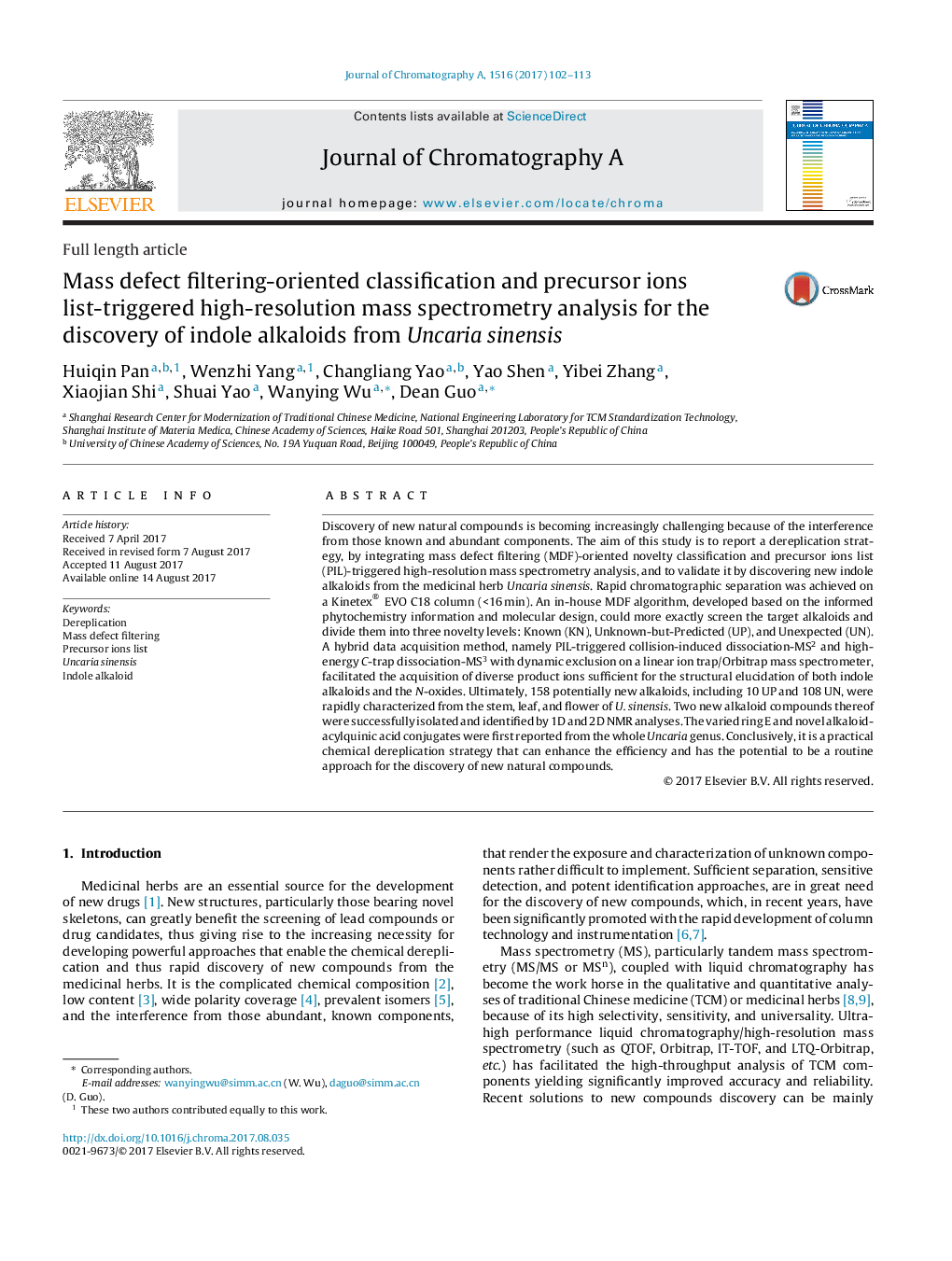| Article ID | Journal | Published Year | Pages | File Type |
|---|---|---|---|---|
| 5134880 | Journal of Chromatography A | 2017 | 12 Pages |
â¢A dereplication strategy is proposed and used to discover new alkaloids.â¢It combines MDF-oriented novelty classification and PIL-triggered target detection.â¢In-house MDF more exactly screens the target components and classifies the novelty.â¢A novel PIL-DE-CID/MS2-HCD/MS3 scan method is developed for target detection.â¢New indole alkaloids with unexpected structures are discovered.
Discovery of new natural compounds is becoming increasingly challenging because of the interference from those known and abundant components. The aim of this study is to report a dereplication strategy, by integrating mass defect filtering (MDF)-oriented novelty classification and precursor ions list (PIL)-triggered high-resolution mass spectrometry analysis, and to validate it by discovering new indole alkaloids from the medicinal herb Uncaria sinensis. Rapid chromatographic separation was achieved on a Kinetex® EVO C18 column (<16Â min). An in-house MDF algorithm, developed based on the informed phytochemistry information and molecular design, could more exactly screen the target alkaloids and divide them into three novelty levels: Known (KN), Unknown-but-Predicted (UP), and Unexpected (UN). A hybrid data acquisition method, namely PIL-triggered collision-induced dissociation-MS2 and high-energy C-trap dissociation-MS3 with dynamic exclusion on a linear ion trap/Orbitrap mass spectrometer, facilitated the acquisition of diverse product ions sufficient for the structural elucidation of both indole alkaloids and the N-oxides. Ultimately, 158 potentially new alkaloids, including 10 UP and 108 UN, were rapidly characterized from the stem, leaf, and flower of U. sinensis. Two new alkaloid compounds thereof were successfully isolated and identified by 1D and 2D NMR analyses. The varied ring E and novel alkaloid-acylquinic acid conjugates were first reported from the whole Uncaria genus. Conclusively, it is a practical chemical dereplication strategy that can enhance the efficiency and has the potential to be a routine approach for the discovery of new natural compounds.
